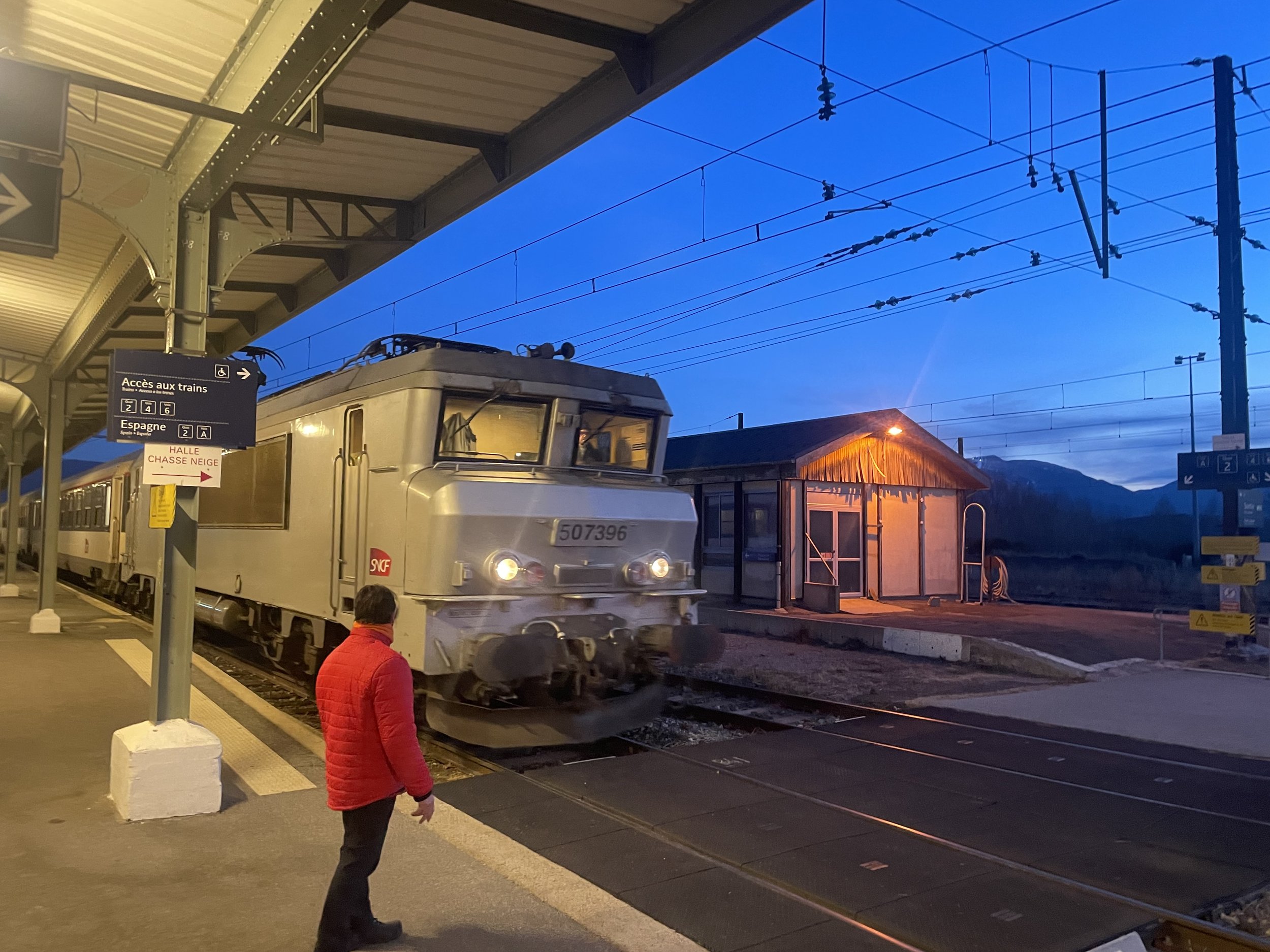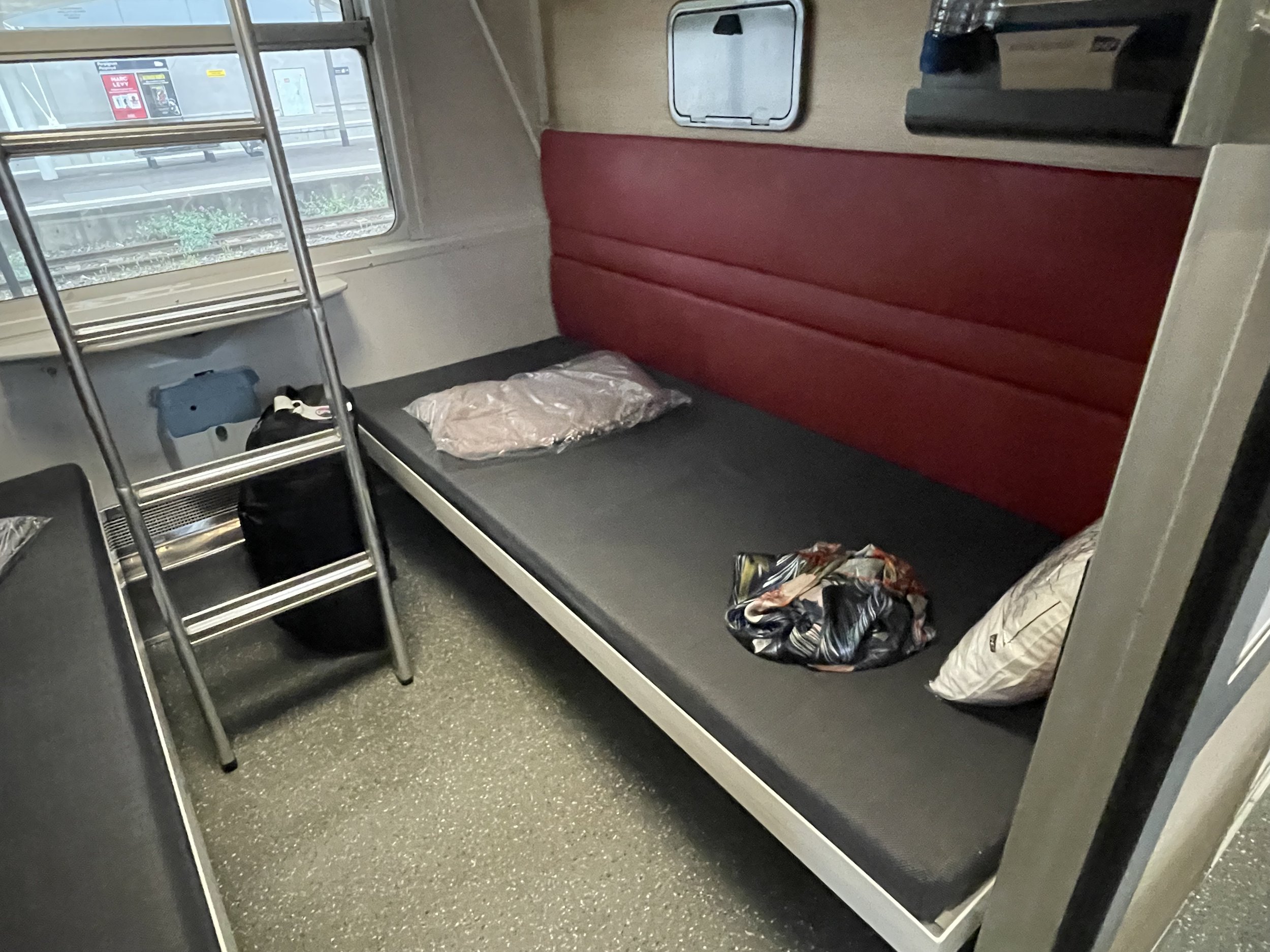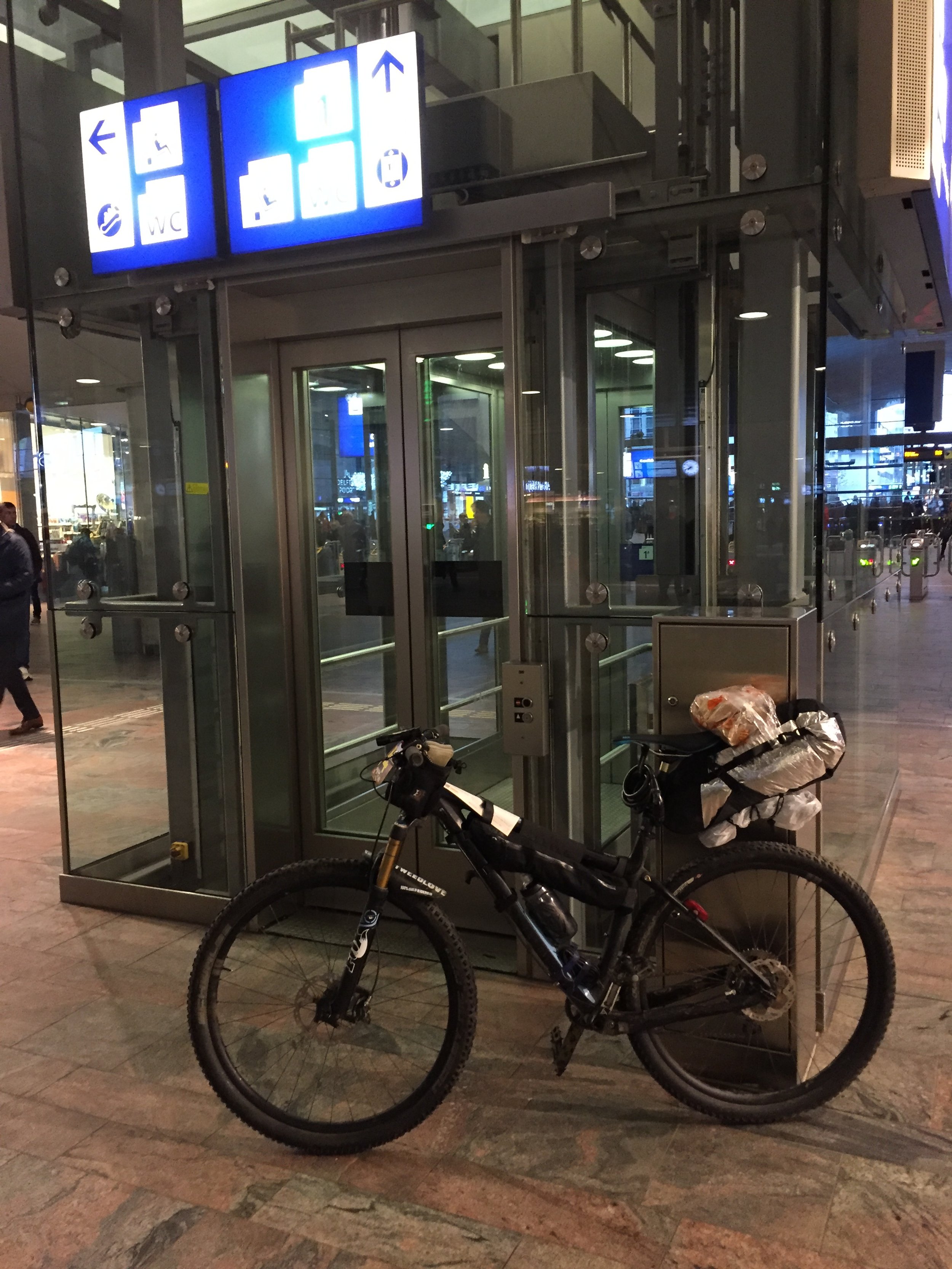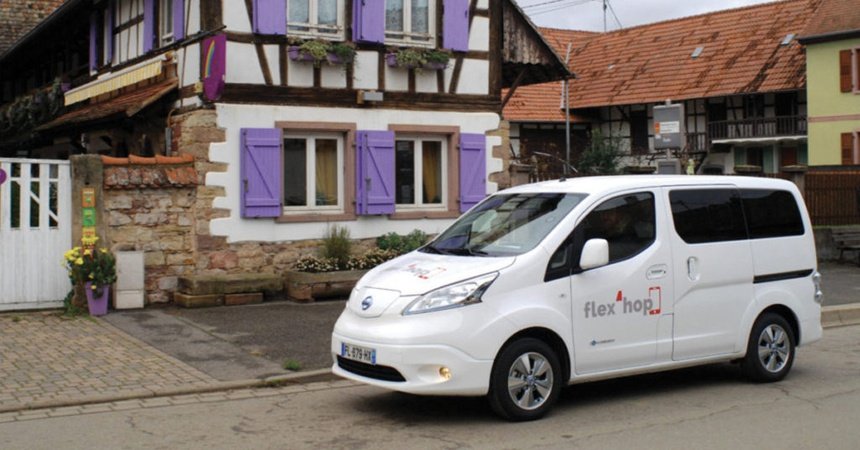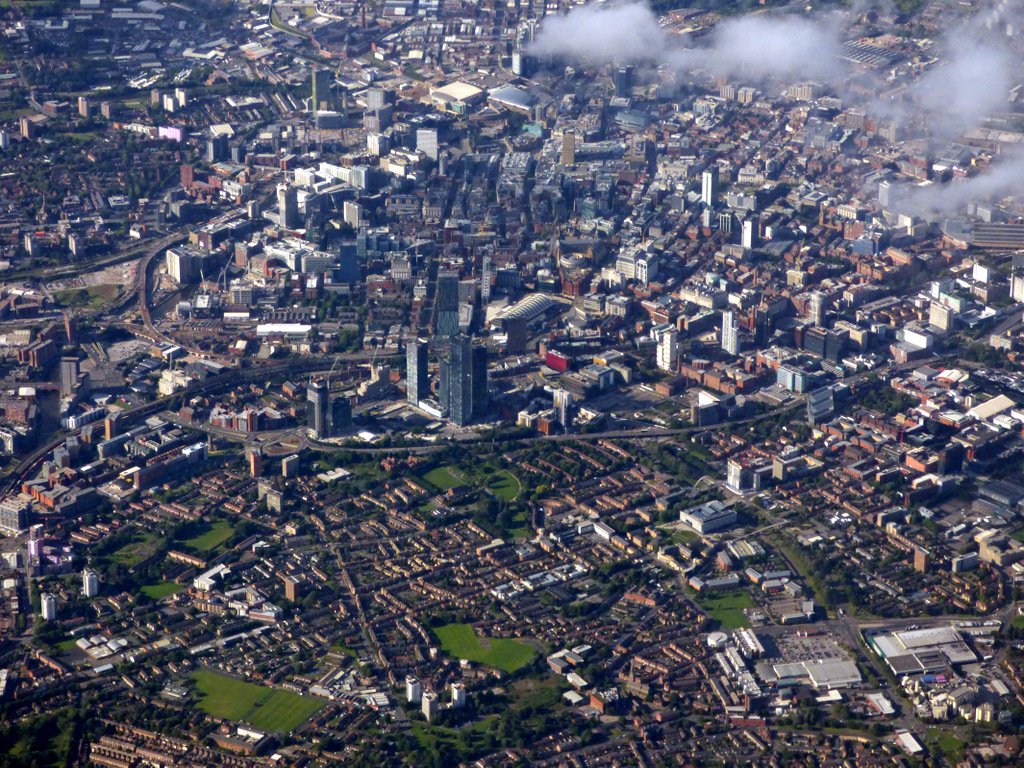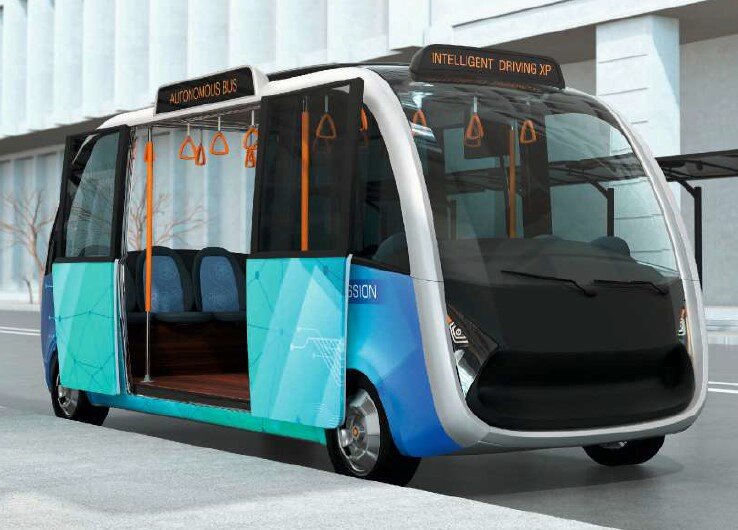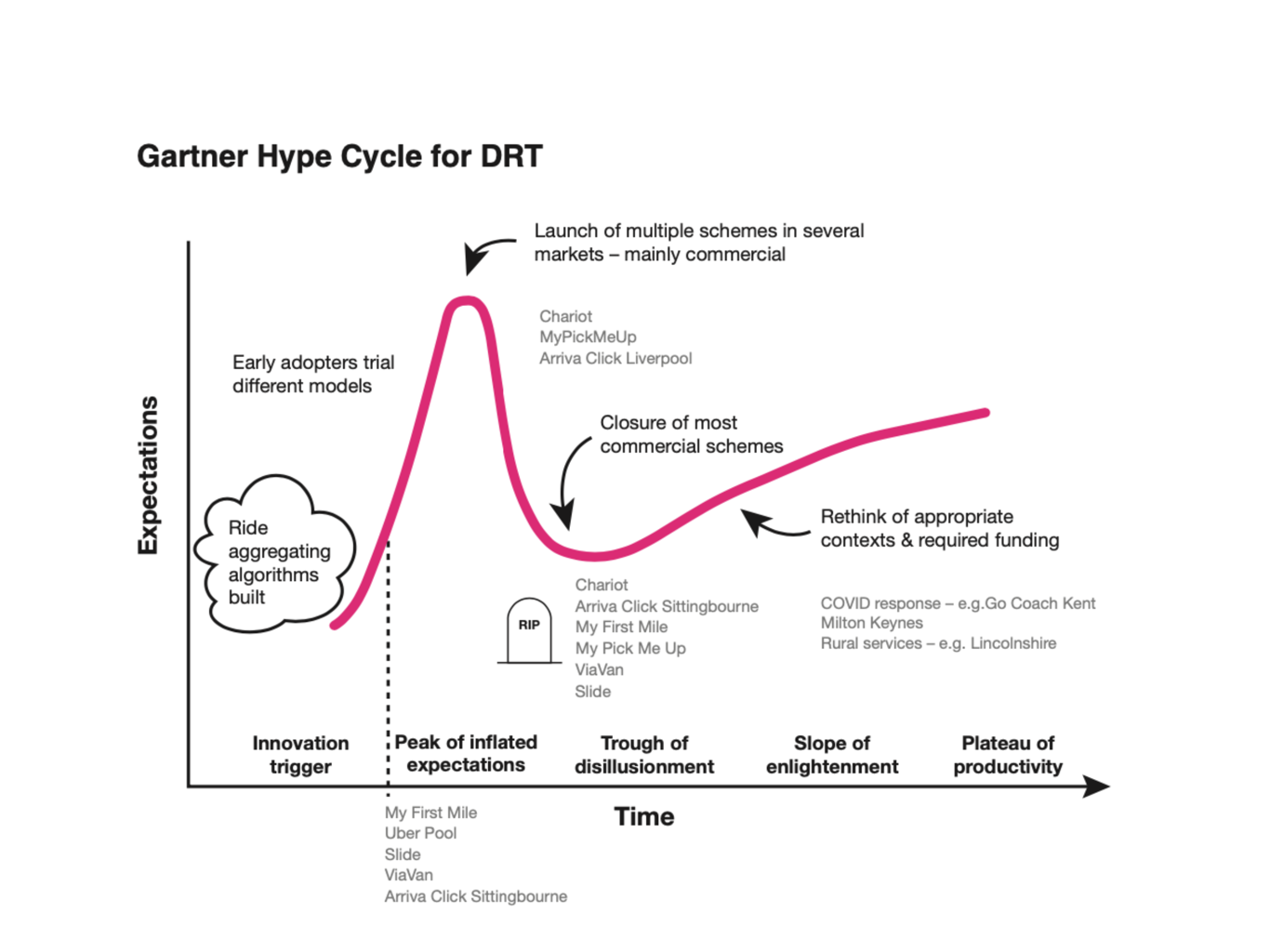Lightweight electric vehicles, smart booking systems, combined docking and charging stations… If all of this sounds like a cutting-edge micromobility system, you’re in for a surprise. - it was also being done in 1970s Amsterdam. In this article for ITS International magazine Beate documents the unlikely history of the Witkar.
Download here (PDF).
No city is a traffic island
As cities replan their centres around people, not cars, they face resistance from suburban residents who see no alternative to using private motor vehicles. This piece for ITS International looks at examples from four European cities and asks whether they can keep the tides of traffic at bay.
Read moreWebinar recording: Redesigning Rural Bus Networks
Once-in-a-generation changes are coming to the UK bus industry with the introduction of franchising and the new Bus Services Bill. Beate recently hosted a webinar exploring the transformative effect that this could have on UK bus networks outside cities titled Redesigning Rural Bus Networks - Can Franchising Work in Rural Areas?
Read moreDRT Case Study: Go2Gate
Photo: Mark Lyons
As part of its new Surface Access Strategy, Heathrow Airport has replaced a fixed-line bus serving the nearby town of Dedworth with a demand-responsive service for air passengers and airport staff. This case study looks at the rationale behind this decision and the effect of changing the service type including journey times, ease of use and passenger satisfaction.
Read moreMeasuring success... is... complicated... new paper
I’ve been looking at how you measure the success of DRT schemes for a paper for the Transport Practitioners meeting, ‘Standardising DRT Metrics to Compare Fleet Performance’.
Whilst I only had time to do one worked example, I have started to run the numbers on other schemes - which has helped me understand just how linked performance is to population density. If you have comments or examples to share I willl be updating the paper for next years’ TPM.
Can’t you just fly?
“Can’t you just fly?” is the exasperated refrain as I reel off my itinerary to my friends, family and husband. I’ve been plotting multimodal transcontinental journeys for about as long as I have had my own passport (which probably coincided with reading the words ‘greenhouse effect’ in my dad’s New Scientist in the 1980s). Whilst I never say never, I do spend a lot of time considering, planning and working out whether flying can be replaced with a combination of trains, buses, ferries and bicycles (with the occasional electric car trip and car sharing figuring too).
On the plus side this also means that, as a transport person, I can put my hand on my heart and say I’ve tested out the limits of multi-modal low carbon travel. Sometimes I’ve found it challenging (it shouldn’t just be my personal wilfulness that makes it possible) but sometimes I’ve even persuaded people to come along.
One positive is that I’ve noticed is that long distance rail travel is getting easier. I reckon that I was on one of the last couchette trains to Perpignan in the 1990s, just before they were taken out of service and long before I was involved in transport. There was a brief piece on the radio and I had a quiet sad moment of frustration and despair.
A couple of years ago I was one of the first takers for the revived programme of refurbished sleeper trains between the south of France and Paris. And I am enjoying the renaissance in sleeper travel as the list of routes keeps growing. There are plans in place to connect Europeans rapidly and comprehensively by rail.
I love sleeper trains. Nothing beats the trundling motion for sleeping - or the anticipation of waking up somewhere new. It’s no exaggeration to say that I’ve slept my way across continents. From Milan to Germany and from Inverness to London (and again in the 90s) London to Penzance as well as my regular trips between Paris and Perpignan. As an adventurous teenager I navigated the length of India by train, from the foothills of the Himalayas to the Kerala in the south.
Lately my sleeper train experience is by SNCF, where train de nuit first class couchettes are spacious. But unless I bag a bargain I usually book the top bunk in the women’s compartment, which is easy to fill with all my bags, packs, notebooks, books and night train kit.
Ferries too enable this magic. Realising that I could pack all my stuff onto my bike in various frame bags and seat rolls and then ride onto a ferry was a revelation.
Pre-covid (and before P&O fired all their staff and rehired them at reduced wages) the Hull ferry was my favourite way to leave the UK. Just cut across eastwards from Todmorden on the train. Make use of the Hull cycle lanes, board ferry and wake up in Rotterdam (or Zeebrugge if you don’t mind cycling down a major traffic heavy dual carriageway as you emerge from the boat).
This arrangement is much easier now bike racks have started appearing on trains that refused to carry cycles previously. Cyclists can now get that self same night train from Paris to the south of France. New TGVs and German ICE trains have cycle spaces where previously bikes were banned on board without exception.
This temporary bike aversion was something I found out the hard way on a trip a few years ago when ICE train rolling stock was substituted for the regional train I’d booked for me and my laden bicycle. The guard said ‘Nein’ very emphatically which led to a great deal of rerouting and rebooking. It worked out. But not that day.
Maps too can be misleading. I’ve written a lot about transport data, including pavements and issues for pedestrians and cyclists, but even knowing the issues I have been caught out.
With ageing parents in eastern Germany I set out from the north of England on a well packed bike. The bike got me from Hull train station to the ferry. And from the ferry terminal to Rotterdam station on the other side. Whilst the theory was that this was only 10 miles on google maps, the bike lane route was double that. I had to put my head down and pedal ‘spiritedly’ to make my train.
Even this is improving. Better mapping and journey planners are taking root. You can book combinations of trains across national borders more reliably. And find your way round cities with MaaS and protocols-MaaS apps.
It’s not just the carbon footprint of surface travel that appeals to me. I like the feeling that I could change tack. Standing in a station surrounded by the bustle of travellers, the engines’ throaty growls, the beeps and the whistles, I’m often tempted by the promise of far away places that are just a train ride away. I could ditch my plans and hop on the express train to Vienna. Or Istanbul. There’s a romance and allure I find difficult to explain. Can’t I just fly? No.
Do I fly? Yes. Sometimes. I recently gave up on trying to get from the south of France to Dublin overland and booked a flight. That was a rail-tunnel-rail-ferry-rail combination that went beyond my tolerance for time spent sitting (or lying) down.
Rural transport - and islands in particular - present challenges which will hopefully be alleviated by short hop electric planes and even (with all sorts of provisos) drones that can reduce the carbon footprint of sea-crossings and other hard to traverse features.
As humans we get very tied into the idea that there’s one way to do things. It’s easier and quicker and reduces our cognitive load to commit to a single solution. Whether it’s flying everywhere or not flying anywhere.
But the thing is, the plurality and multiplicity of options is powerful and resilient.
VAT, visitors and value… how HMRC hampers decarbonising strategies
How an obscure VAT rule makes low carbon visitor experiences harder to create.
Read moreBuilding a better bus service
At the start of this year we had the opportunity to be part of an extremely exciting project initiated by Gloucestershire Community Rail Partnership: designing and trialling a brand new bus service linking rural communities with local transport hubs and amenities.
Read moreIs it time to rethink bus regulation?
Passenger vehicle operation in the UK is an obstacle course of regulations - can we do anything to smooth the way for flexible transport?
Read moreE-scooters have part to play in the transition to active travel
E-scooters fuel alarmist headlines, but they can also help clean up our transport system. This piece for Smart Transport looks at e-scooters in light of the recent trials in many UK towns and cities and considers the issues that their wider use would address and create.
Read moreRural Transport is Vital For City Centres
ManchestAir. Image: Wikimedia Commons
In this piece for Passenger Transport, Beate examines the relationship between cities, which tend to be seen as able to support good public transport networks, and less densely populated adjacent areas, which are often regarded as not worth investing in.
Using the example of Manchester, UK, the travel patterns of the city centre and the outlying settlements are analysed to make a case for investment across the board, rather than focusing efforts solely on urban areas
Location, Location, Location
A new report on the ethics of location data has interesting insights for transport.
Read morePolitical or personal choice? Buying into decarbonisation
Is decarbonisation of transport dependent on public support, or tough choices by politicians?
Read moreMove Fast And Break Things
As “disruptive” tech comes to transport, Mark Zuckerberg’s adage is starting to take on a sinister new undertone.
Read moreDemand Responsive Transport – are we over the hype?
“The Gartner Hype Cycle could have been designed with DRT in mind”
New survey examines the progress of on-demand services
Read moreSmart Transport Issue 10 - Bus Strategy and MaaS Regulation
The May 2021 issue has two articles from Beate, looking at the deliverability of the National Bus Strategy and examining the barriers to MaaS thrown up by the UK’s commercial and regulatory landscape.
Read moreDRT: transport jobs vs gig economy?
The Bus Strategy regularly refers to demand responsive transport ensuring that the network runs in areas and at times where there are fewer passengers. Considering that DRT can be provided through private hire licensing or bus operator regulation, now is the time to think about how much of our network is provided through regular employment (with the safety framework it entails) and how much heavy lifting is done by gig economy workers.
Read moreNational. Bus. Strategy.
There are a number of interesting and exciting things about Bus Back Better, the National Bus Strategy for England.
The first thing that is important about the National Bus Strategy is that it is a strategy – it emphasises the strategic importance of buses for achieving national goals from net zero to economic recovery and doesn’t hold back on their potential. It’s a manifesto for change which starts by setting out exactly how the bus system (if you can call it a system) fails passengers, and how, in failing passengers it fails communities, both urban and rural.
Many of the failings are down to the deregulated marketplace for bus services, which actively prevents bus operators from cooperating by law. This is exacerbated by the industry’s siege mentality, focusing on attempts to maintain market share and shore up passenger numbers in a (seemingly) dwindling market. There also a disconnect between ‘for profit’ mass transport corridors and routes in low density areas which require subsidies from an ever-shrinking pot in order to run at all.
The net impact is that services (in general) have reduced in frequency, run over smaller areas and increased in cost. They are both less useful to the travelling public and less compelling as a transport option. Without reliability in frequency, coverage and price, the bus has become less relevant.
The second significant aspect of the Strategy is that it compels local authorities and bus operators to work together. Where the Bus Services Act of 2017 had begun to roll back some of the deregulation of the 1980s through measures including mandating data sharing, encouraging partnership and no longer completely banning franchising, the National Bus Strategy expects to see operators and Local Authorities working together in Enhanced Partnerships and to actively look at the potential for franchising. It makes Enhanced Partnerships a minimum condition for the receipt of future Bus Service Operators Grants. Until now, Transport Authorities considering franchising have done so whilst under threat of legal action by operators. The sea change is likely to reduce these kind of cross-winds for authorities seeking better control of network planning.
And the third is the way in which it highlights financial support for buses, through investment and ongoing support. This includes infrastructure (like priority bus lanes) and zero emission vehicles, plus technology (which would enable fare capping and integration in Mobility as a Service). It also explicitly looks at the ongoing support for the industry being related to ensuring a strategic bus network – high frequency services in urban areas and reliable coverage – including, potentially, on-demand – services in less dense rural areas.
These three elements could represent a major shift in bus provision with the potential to really change the trajectory of bus travel.
MaaS: Are we finally going to catch the bus?
What’s the block on mobility as a service in the UK? The problem is buses. But the solution may just have been published.
Read moreSmart Community Podcast
Beate recently made her second appearance on the My Smart Community podcast.
Read more


